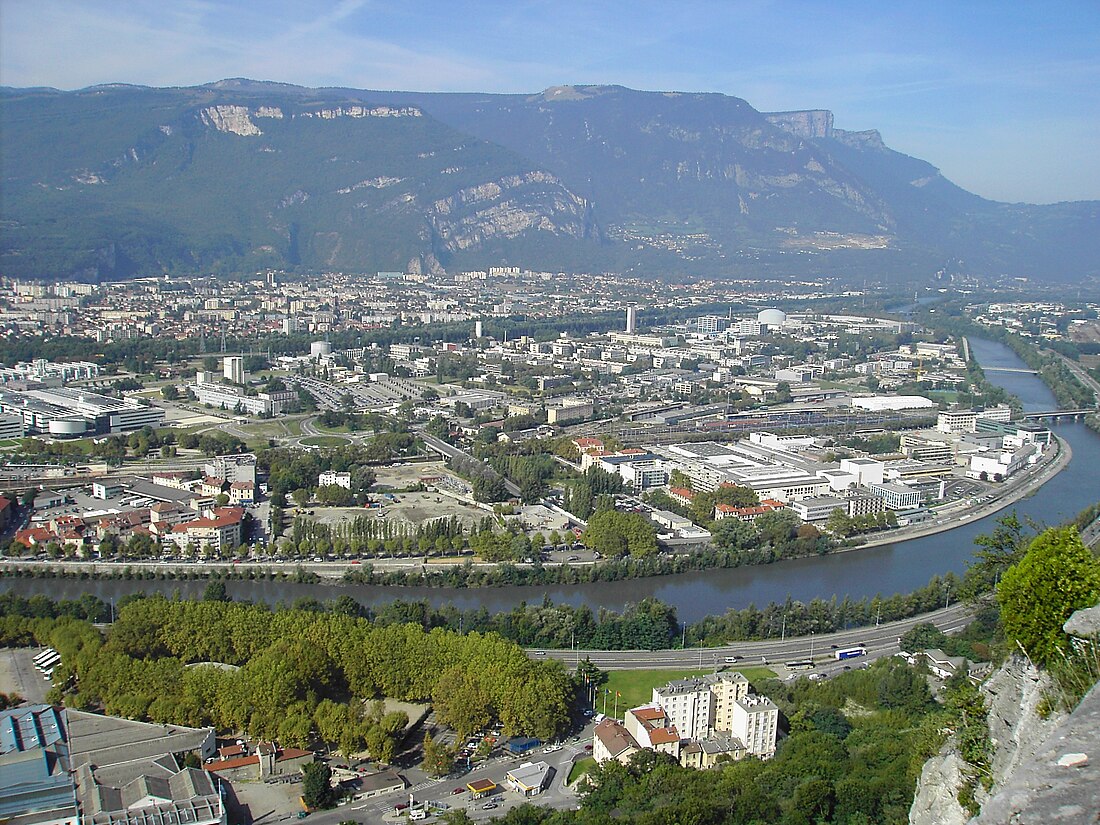Top Qs
Timeline
Chat
Perspective
Polygone Scientifique
From Wikipedia, the free encyclopedia
Remove ads
The Polygone Scientifique (en: Scientific Polygon), nowadays known as Presqu'Île (peninsula) is a neighborhood of the city of Grenoble in France. It includes a significant number of research centers in a peninsula between Isère and Drac.
This article needs additional citations for verification. (April 2021) |
You can help expand this article with text translated from the corresponding article in French. (November 2015) Click [show] for important translation instructions.
|

Remove ads
History
Summarize
Perspective
The area was formerly a polygone d'artillerie or artillery range, with ammunition depots, thus the name.
Polygon hosts in 1956 the first French Atomic Energy Commission (CEA) outside Paris and created by Professor Louis Néel.[1] In 1962, it hosts a campus CNRS. In 1967, the Laboratoire d'électronique et de technologie de l'information was founded by CEA and became one of the world’s largest organizations for applied research in microelectronics and nanotechnology.
Three international organizations are implanted between 1973 and 1988 with the Institut Laue–Langevin, the European Synchrotron Radiation Facility and one of the five branches of the European Molecular Biology Laboratory. In 2006, the complex Minatec specializing in nanotechnology opens on the Polygon and in 2007, the Institut Néel, specializing in condensed matter physics, is founded.
National Laboratory for Intense Magnetic Fields has also numerous collaborations in terms of technical and technological innovations with these institutions.
In 2008, the new innovation campus is called GIANT (Grenoble Innovation for Advanced New Technologies).[2][3][4]
In 2012, Clinatec is founded on Polygone Scientifique by Professor Alim-Louis Benabid.[5][6]
Remove ads
Transportation
The Polygon is served by Grenoble tramway.
See also
References
Bibliography
External links
Wikiwand - on
Seamless Wikipedia browsing. On steroids.
Remove ads
